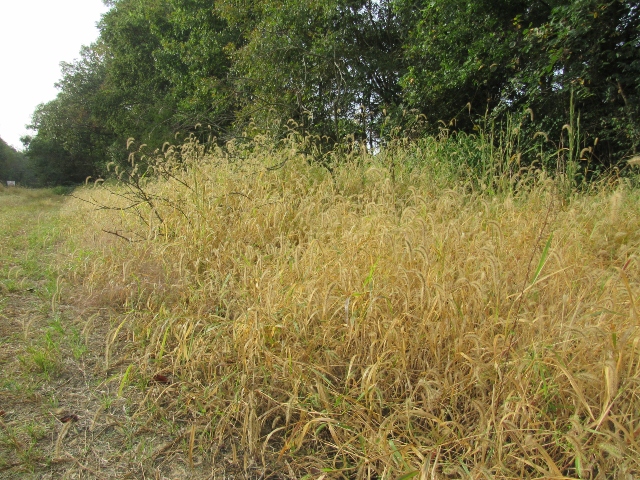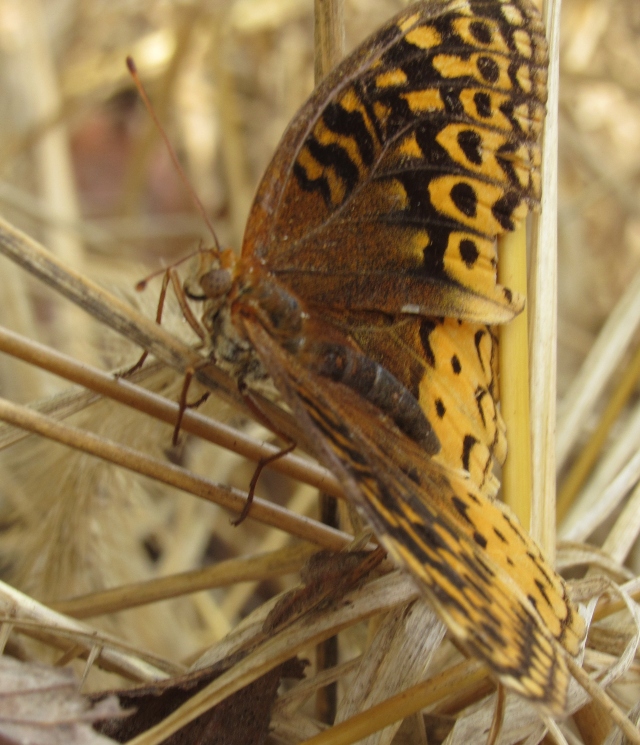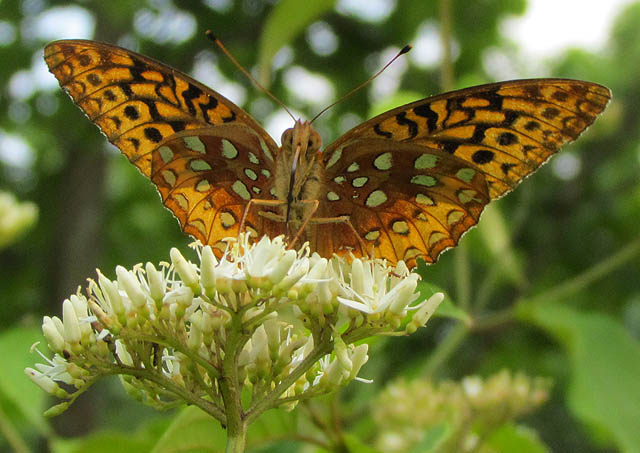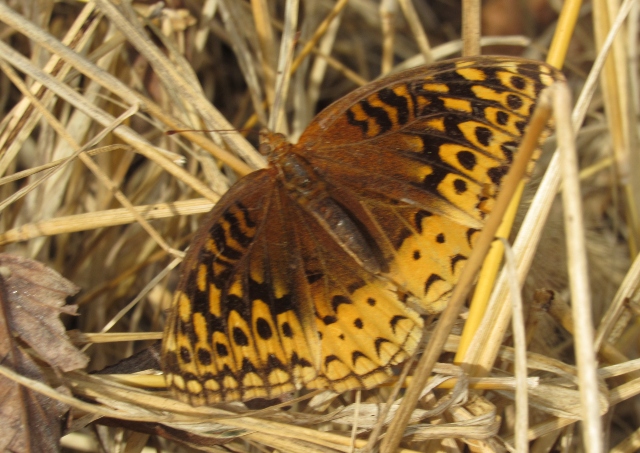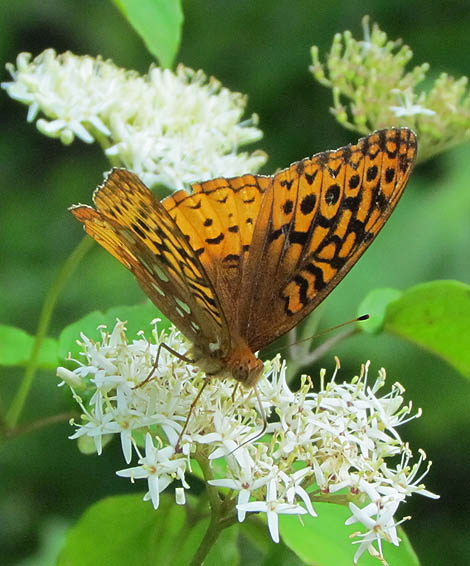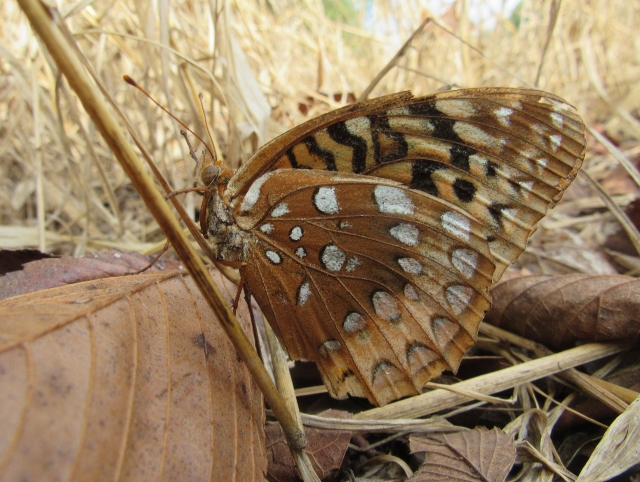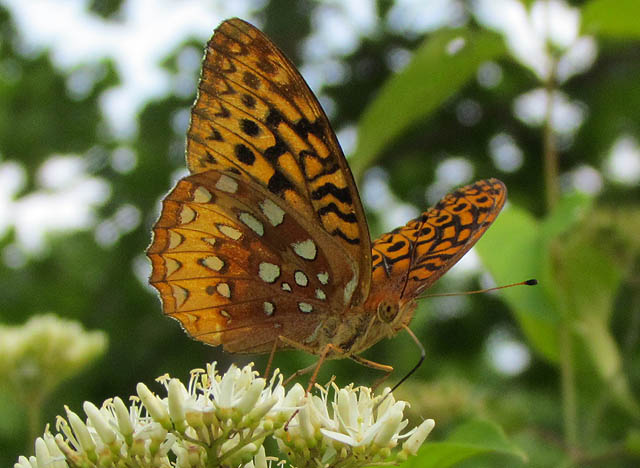While walking along railroad tracks in southern Illinois, I observed an example of this fine butterfly, which I also see in my home state of Ohio on occasion.
This beautiful insect is named for the orange and black fritillary pattern on the upper side of the wings and the silvery spangled areas on the underside of the wings. The sexes are colored differently, with females being more pale with a dark blackish color on the rear half of their wings. This pattern is not seen as distinctly in males.
The species is long-lived and many individuals that are found in late August and September (and in this case early October) are often very worn, with frayed and even missing parts of their wings.
The wingspan of the Great Spangled Fritillary is 3 to 4 inches. As mature butterflies, due to their large size, prefer large flowers including Common Milkweed, Thistle and Joe-Pye-Weed.
Similar to many other butterflies, they have chemoreceptors on the bottom surfaces of their four walking legs. These allow butterflies to find nectar with their feet.
Their caterpillars eat the leaves of different types of violets. They eat at night. During the day, the caterpillars hides under leaves. Unlike most butterfly larvae, which molt five times, they molt six times, becoming bigger each time that they molt until they they reach the final larval stage.
Great Spangled Fritillaries live mostly in temperate climates, but can be found in extremes from the arctic to the subtropical. They can be found in both open woodlands and prairies, preferring to be in moist habitats. Look for this butterfly in open, damp places including fields, valleys, pastures, meadows, open woodland, and prairies.

